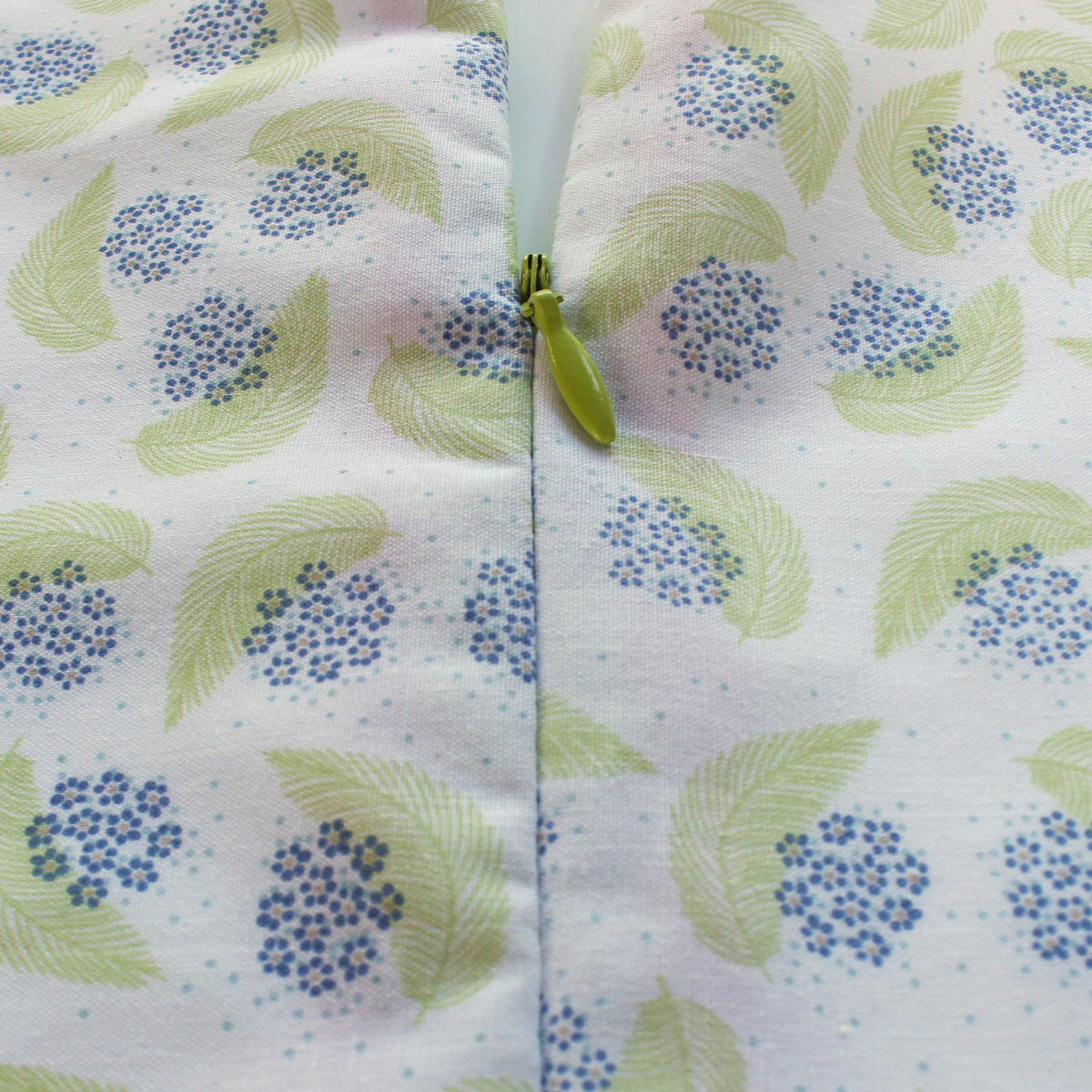Lola Sewalong: Small and Full Bust Adjustment
Welcome back to the Lola Sewalong. In today's tutorial, we'll cover how to make a small and full bust adjustment for this pattern. We've gone over how to select your bust size in this post. If you need a refresher, you can always refer back to it. Let's get started!
Bust Adjustments:
You calculated the difference between your high bust measurement and your full bust measurement. If the difference between these two measurements was less than or greater than 2", you will require a small or a full bust adjustment.
Difference is less than 2:
You will need to make a small bust adjustment (SBA)
Difference is greater than 2":
You will need to make a full bust adjustment (FBA).
Determining the amount to adjust your pattern
Small Bust Adjustment:
Example measurements: High bust: 34”, Full bust: 35”.
- I’ve determined that the difference between my high bust and full bust is 1”.
- I’ll select my "bust size" for my pattern based on my high bust measurement (size 4).
- Now, take the difference between your high bust and full bust (1”) and divide the amount by half (e.g: 1/2”). We are dividing the measurement in half because we are working with half of the dress pattern.
- When we make our adjustments, we’ll be making a ½” reduction at the bust.
Continue to the SBA Instructions below.
Full Bust Adjustment:
Example measurements: High bust: 37”, Full bust: 40”
- I’ve determined that I’m a 3” difference between my high bust and full bust. I’ve selected my bust size for my pattern based on my high bust measurement (size 8).
- Now, take the difference between your high bust and full bust (3”) and divide in half (e.g: 1½”). We are dividing the measurement in half because we are working with half of the dress pattern.
- When we make our adjustments, we’ll be spreading our piece out to build in 1½” at the bust.
Two Bust adjustment tutorials:
- If your adjustment amount is 1/2" or less, continue to the first Full Bust Adjustment tutorial below.
- If your adjustment is more than 1/2", continue to the second Full Bust adjustment tutorial below.
Small Bust Adjustment:
- We'll be making the modifications to pattern pieces A and B.

- Piece B: At the bustline, mark in from the pattern edge by your adjustment amount. Using a curved ruler, create a new line, blending smoothly above and below the bustline, meeting the original pattern edge.
- Re-mark any notches that will be trimmed off due to the adjustment.
- The adjustment of Piece B has likely shortened the princess edge, meaning that piece A will need to shorten so that the length of the princess edges matches. Walk the pattern pieces together along the princess edges and determine how much to shorten Piece A.
- Fold piece A at the bustline to shorten the piece by the necessary amount.
- Depending on your adjustment, as you walk the pattern pieces together, you may find that the center notch on piece A may need moving due to the change in length of the princess edge. You will be able to determine this by walking the princess edges together. Position the center notch on piece A to match the center notch of piece B.

Full Bust Adjustment for 1/2" or less:
- We will be making changes to the Upper Front Centre (A) and Upper Side (B) pieces.

- Place a piece of paper behind the pattern pieces as indicated.
- On piece A, at the bustline, mark out from the pattern edge by your adjustment amount. Using a curved ruler, create a new line, blending smoothly above and below the bustline, meeting the original pattern edge.
- Re-mark any notches along the new edge that will be affected due to the adjustment.
- The adjustment of Piece B has likely lengthened the princess edge, meaning that piece A will need to lengthening so that the length of the princess edges match. Walk the pattern pieces together along the princess edges and determine how much to lengthen Piece A.
- Cut along the bustline of piece A, and lengthen the piece by the necessary amount.
- Depending on your adjustment, you may find when walking the pattern pieces, that the center notch on piece A may need to be moved, due to the change in length of the princess edge. You will be able to determine this by walking the princess edges together. Position the center notch on piece A to match the center notch of piece B.

Full Bust adjustment for more than 1/2":
- We will be making changes to the Upper Front Centre (A) and Upper Side (B) pieces.

Upper Side Piece (B):
The Upper Side piece wraps around both the front and back of our body. We want to make the bust adjustment to only the front portion of this piece, so for now, we will cut the piece in half along what would otherwise be the "side seam." Don't worry; we will attach the piece back together later.
- Cut this piece in half, cut along the grainline, as this is marked exactly where a "side seam" would fall.
Draw the Alteration Lines on the Pattern
Upper Side Piece (B):
- Along the armhole, mark the seam line near the armhole notch, 3/8" (1cm) away from the edge; This is indicated by a red dashed line. Along this line, at the notch, mark a point. This point will be a "hinge" for a future step.
- Along the princess edge, mark the seam line near the bustline, 3/8" (1cm) away from the edge; This is indicated by a red dashed line. Mark a point at the intersection of the seam line and bustline. Label this point BP for Bust Point.
- Draw line 1, making sure it is very close to the princess edge. Start the line from the waist edge, straight up to meet the bustline (This line should be parallel to the side edge), and then directing the line towards the hinge point along the armhole.
- Draw line 2, beginning at line 1 along the bustline, then slanting slightly down towards the side edge.
- Draw line 3, anywhere between line 1 and the princess edge, below the bustline.
Upper Front Center Piece (A):
- Draw Line 2, Consider the bustline as line 2 on this piece.
- Draw line 3, matching line 3 from the Upper Side (B) piece.
Adjustments:
- Place the front portion of the Upper Side (B) piece onto a sheet of paper. Tape the upper portion of the pattern piece to the paper.
- Cut along line 1, cutting to but not through the hinge point. From the armhole edge, along Line 1, cutting to but not through the hinge point.
- Swing the lower portion of the pattern piece away, creating space between Line 1 edges. The space created, in the location of the blue horizontal line, should be equal to your adjustment amount.

- Cut along line 2, cutting to but not through, line 1.
- Swing the lower the portion of the pattern below line 2 down, until the edges of line 1 are parallel.
- Secure this lower portion of the pattern to the paper.

- Cut along line 3. Lower this small portion of the pattern down, so that it is level with the waistline of the corresponding side of the pattern. Make sure that the space between line 1 is maintained. Tape this pattern piece to the tissue.
- Draw a line from the point of line 1 through the bust point (indicated here by the green line).
- Cut the pattern along this line.
- Remove the tape, securing the upper portion of the pattern to the paper.

- Cut the pattern along this green line; This will allow you to close the side dart created along Line 2. Swing the upper portion of the pattern so that the edges of line 2 meet.
- Tape the upper edges of line 1 to the paper.

- Smooth out the princess edge.

- Tape the back side of piece B back together with the front side.

- Place Upper Front Center (A) onto a piece of paper.
- Cut along line two and three
- Separate the sections of the pattern, creating spaces between these pieces equal two the corresponding spaces on piece B.
- Make sure to keep the center front edge parallel; This is indicated by the blue line.
- Secure the sections of the pattern to the paper.
- Smooth out the side edge.

- Cut the excess paper along the princess edge.
- Voila, your full bust adjustment is complete!
- Remember that all corresponding pieces that are attached along an edge must receive a similar adjustment. Piece H (Lower Side) and piece F (Pocket) will need to be widened throughout the length of the piece by the same amount that Piece B has been widened, so that the match when sewn together.


Next Post:
Join us on November 22 for our next Lola Sewalong post where we cut out our fabric.
YOU MAY ALSO LIKE:
Leave a comment
Comments will be approved before showing up.
Also in The Victory Patterns Blog

Pair the Sofia Bell Sleeve Strap with any sleeve option

How to sew a centered zipper
A centered zipper is one of the most usefull zippers to be able to sew. They are commonly used in skirts, dresses, and pants, as well as cushion covers and handbags. In this tutorial, we'll show you how to sew a centered zipper using directional sewing, which avoids the fabric from shifting in different directions once the zipper is sewn in.





